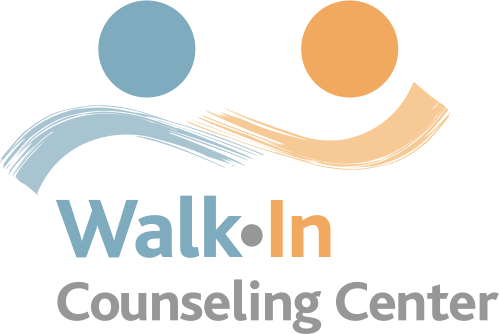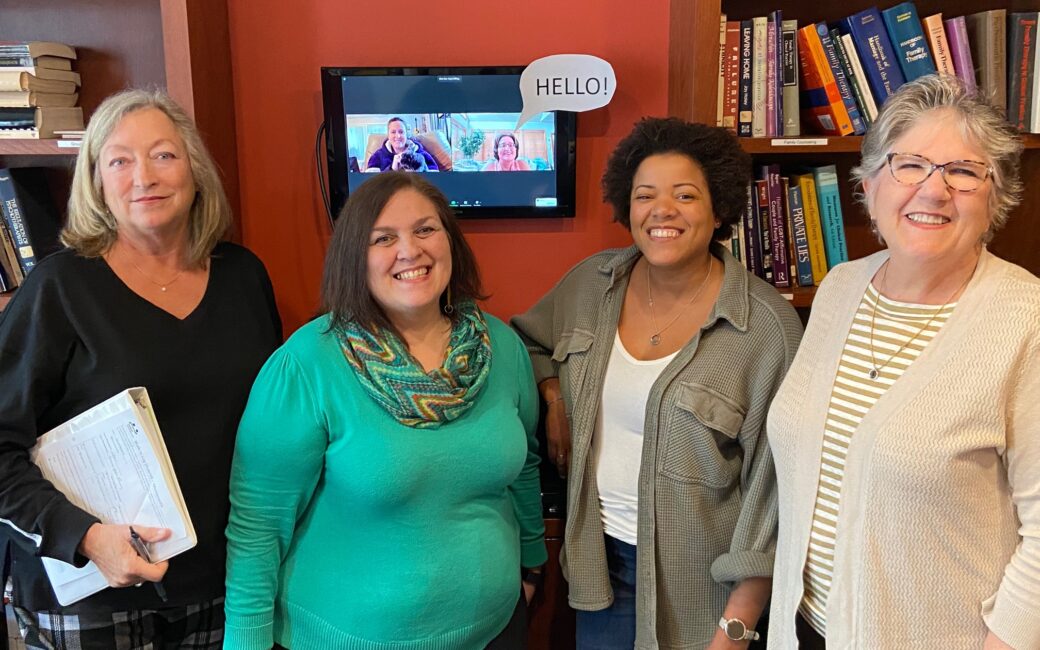Stephanie T. first came to Walk-In Counseling Center when she was a teenager living in a stressful foster home. Today, she is a Walk-In volunteer counselor, helping others through their hard times.
Stephanie never forgot her first counselor, Karen M. A few years ago at a social work conference, she spotted Karen across the room, and a joyful reunion followed. “It’s been a full circle for me. I came to Walk-In needing the service, and now I provide it. It’s been wonderful way to give back,” Stephanie says.
When Stephanie was two, her father suffered a debilitating heart attack and died four years later. Her mother suffered from severe schizophrenia. Local officials took Stephanie away from her mother at age 14 because of concern for her safety.
At one foster home, it was a “Cinderella kind of situation,” in which the family took her in for the money and did not provide for her needs. The family had Stephanie do cleaning and child care for the family’s five children and in their day care business.
“When I first came to Walk-In, I was getting really bad headaches in my sleep, and I couldn’t concentrate,” Stephanie recalls. “Karen (the counselor) walked me through progressive muscle relaxation and other things that took away a lot of my stress. I did five sessions with Karen, and I wasn’t having headaches any more.”
Stephanie went on to live in a shelter and a group home. “Being exposed to all that in childhood made life harder, but saved me in a lot of ways,” she says. “It helped shape my path for the future.”
Stephanie’s path to social work wasn’t a straight one. First, there was opposition from extended family. Her uncle, upon hearing she had received counseling at Walk-In, went to court to try to prevent her from continuing to receive services there. When Stephanie later shared her intention to earn a degree in social work, her uncle tried to talk her out of it.
But she got inspiration from her last foster mother, who worked at the group home where Stephanie lived at age 17, and with whom she is still close. After working as a secretary at hospitals and clinics for many years, Stephanie decided to enroll in school a after a divorce and to pursue a social work degree.
Stephanie returned to Minnesota in 2002 to live with her former foster mom, who helped take care of her five-year-old daughter. Stephanie would work all day, doing intake at Fairview for home care, then do her practicum at a middle school and a high school clinic, then help her daughter with homework and put her to bed. After bedtime, she would go to Augsburg University to work on papers until about 5 am, sleep two hours, and start over again. On weekends, she worked at the Bridge for Youth, “and I loved that.” After three and a half years of this pace, she had completed her bachelor’s degree and got her masters in social work.
On graduation, Stephanie worked in hospice social work for 12 years, then obtained her clinical social work license in order to better support her daughter. She provided individual therapy for another 12 years before volunteering at Walk-In.
Her experiences have sometimes held surprises. One day, a client Stephanie was helping to process grief described losing a neighbor with whom she was very close and treated like a grandfather. After some conversation, Stephanie realized the neighbor was her uncle, “the one who took me to court! I remember him talking about her. I was able to say, ‘I know he loved you.’”
After each clinic, Stephanie enters the team room to share ideas with other counselors about the presenting issues of the day. She remembers thinking of that room when she was a young client as “a mysterious place where you imagine the counselors solving world problems.” And in a way, they do.
Providing free counseling services to people who otherwise might not have access is a way to address a big problem, one person at a time. “I love the other volunteers and the staff at Walk-In,” Stephanie says. “And a lot of pressure is off when you’re not being forced to perform for money.”
As a former client turned counselor, she says, “It’s cool to be on the other side.”

